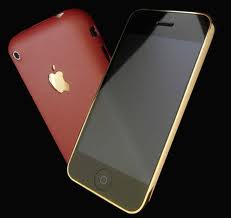The 3.5 mm TRRS connector for the headphones is located on the top left corner of the device. The headphone socket on the original iPhone is recessed into the casing, making it incompatible with most headsets without the use of an adapter.Subsequent generations eliminated the issue by using a flush-mounted headphone socket. Cars equipped with an auxiliary jack allow for handsfree use of the iPhone while driving as a substitute for Bluetooth.
While the iPhone is compatible with normal headphones, Apple provides a headset with additional functionality. A multipurpose button near the microphone can be used to play or pause music, skip tracks, and answer or end phone calls without touching the iPhone. A small number of third-party headsets specifically designed for the iPhone also include the microphone and control button.The current headsets also provide volume controls, which are only compatible with more recent models.These features are achieved by a fourth ring in the audio jack that carries this extra information.
The built-in Bluetooth 2.x+EDR supports wireless earpieces and headphones, which requires the HSP profile. Stereo audio was added in the 3.0 update for hardware that supports A2DP.While non-sanctioned third-party solutions exist, the iPhone does not officially support the OBEX file transfer protocol. The lack of these profiles prevents iPhone users from exchanging multimedia files, such as pictures, music and videos, with other bluetooth-enabled cell phones.
Composite or component video at up to 576i and stereo audio can be output from the dock connector using an adapter sold by Apple.iPhone 4 also supports 1024x768 VGA output via a dock adapter. The iPhone did not support voice recording until the 3.0 software update.



































